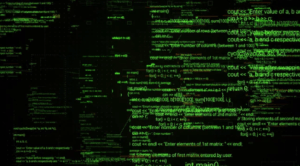Table of Contents
ToggleIntroduction.
In the modern digital era, cyberattacks have evolved from isolated incidents carried out by lone hackers into complex, well-coordinated operations executed by organized cybercriminal groups, state-sponsored actors, and even hacktivists pursuing ideological goals. Every click, connection, and credential in the digital ecosystem represents both an opportunity and a potential vulnerability. As businesses, governments, and individuals become increasingly dependent on interconnected systems, the scope of cyber threats has expanded exponentially. Attackers today don’t simply break into systems by chance they follow a structured, strategic process designed to infiltrate networks, exploit weaknesses, and extract valuable data while avoiding detection for as long as possible.
A cyberattack rarely happens overnight. Behind every breach headline and data leak lies a meticulous chain of events that unfolds in stages each with a specific objective and method. From the moment an attacker begins gathering information about a target, to the final act of data theft or system disruption, every phase is planned with precision. This sequence, known as the cyberattack lifecycle, provides crucial insights into how modern threat actors operate. By studying this lifecycle, cybersecurity professionals can anticipate attacker behavior, strengthen defenses, and intervene at the earliest possible stage.
The lifecycle typically begins with reconnaissance, the quiet but critical phase where attackers research their targets. They collect information about networks, domains, employees, and vulnerabilities, often through open-source intelligence (OSINT) tools and social engineering tactics. Once enough information has been gathered, the attacker moves to weaponization, crafting a custom payload or exploit tailored to the target’s weaknesses. Whether it’s a phishing email embedded with malicious code or an exploit kit designed to take advantage of outdated software, this phase sets the stage for the next delivery, where the malicious payload is introduced into the target’s environment.
Once the payload reaches its destination, exploitation begins. This is the point at which the attacker triggers the malicious code to exploit a system vulnerability, gaining initial access. After that, the focus shifts to installation, where persistence mechanisms like backdoors or remote access tools are deployed to ensure the attacker maintains control even if the system is rebooted or superficially cleaned. The next step, command and control (C2), is when the compromised system establishes communication with the attacker’s remote server. Through this channel, the intruder can issue commands, harvest credentials, and move laterally through the network.
The final and most damaging stage of the lifecycle is actions on objectives, which can take various forms from exfiltrating sensitive data and encrypting files for ransom to destroying systems or disrupting operations. At this point, the attacker has achieved their mission, whether it’s financial gain, espionage, or pure sabotage. By the time most organizations detect the intrusion, significant damage has already been done.
Understanding each stage of the cyberattack lifecycle is not just a theoretical exercise it’s a strategic necessity. Cybersecurity teams that grasp how adversaries operate can design layered defenses, detect early warning signs, and contain threats before they escalate. Prevention, detection, and response strategies must all align with this lifecycle model to be effective. In a world where new malware variants and attack vectors emerge daily, knowledge of how cyberattacks unfold is one of the most powerful tools defenders have.
Cbersecurity is not about achieving perfect protection it’s about resilience. By studying the lifecycle of a cyberattack, organizations can move from a reactive stance to a proactive one, disrupting attackers at every turn and minimizing the impact when breaches occur. Every phase holds opportunities for detection, and every defense measure, no matter how small, can make a critical difference. The key is awareness understanding the process, anticipating the adversary, and acting decisively before it’s too late.
1. Reconnaissance (Information Gathering).
Every cyberattack begins long before a single piece of malicious code is executed. The first and perhaps most underestimated phase in the attack lifecycle is reconnaissance, also known as information gathering. In this stage, attackers act like detectives, quietly collecting as much intelligence as possible about their target. Their goal is simple to understand the organization’s structure, systems, and vulnerabilities so they can plan a precise and effective attack. Reconnaissance is the foundation of every successful intrusion, and the more thorough it is, the greater the attacker’s chances of success.
Attackers use two main types of reconnaissance: passive and active. Passive reconnaissance involves gathering publicly available information without directly interacting with the target’s systems. This might include searching corporate websites, social media platforms, press releases, job postings, and public records. Tools such as WHOIS databases, DNS enumeration, and social media mining are often used to uncover employee names, email formats, IP addresses, and technology stacks. Passive methods are stealthy because they leave no digital footprint that could alert the target.
Active reconnaissance, on the other hand, involves direct interaction with the target’s infrastructure to probe for weaknesses. This could mean scanning networks for open ports, identifying running services, or testing web applications for vulnerabilities. While active methods yield more precise information, they carry a higher risk of detection by intrusion detection systems (IDS) or security monitoring tools. Seasoned attackers often blend both techniques starting passively to build context, then switching to active probing when they’re ready to move closer to exploitation.
In this phase, attackers often create a profile of the organization, identifying potential entry points such as outdated systems, unsecured endpoints, or poorly configured cloud services. They may even research employee behaviors to find those most likely to fall for social engineering or phishing attacks. Modern reconnaissance has evolved beyond simple network scanning; it now integrates Open-Source Intelligence (OSINT), social engineering, and automated reconnaissance tools powered by AI to map an organization’s entire digital footprint.
Defenders can counter reconnaissance by minimizing the information available to outsiders. This includes limiting what is shared publicly, sanitizing metadata from online documents, enforcing strict access control, and monitoring for unusual scanning or enumeration activities. Implementing deception technologies like honeypots can also trick attackers into revealing themselves early in the process.
Reconnaissance is the foundation of the cyberattack lifecycle the phase where attackers plan their moves with surgical precision. The more data they gather undetected, the more targeted and damaging the next stages can become. Recognizing and disrupting this phase can prevent an attack before it ever begins. Awareness, visibility, and proactive defense are the keys to breaking the chain before it’s forged.
2. Weaponization.
Weaponization is the phase where attackers transform the intelligence gathered during reconnaissance into a practical, tailored attack package. Using the profile they built, adversaries craft malicious payloads designed to exploit specific vulnerabilities, user behaviors, or misconfigurations. This often involves combining exploit code with an appropriate delivery mechanism such as a phishing document, a malicious installer, or a compromised software update. Attackers select exploits that match the target’s technology stack for example, a particular browser bug, a vulnerable server application, or an unpatched operating system version.
Payloads can range from simple scripts and macros to advanced remote access trojans (RATs), fileless malware, ransomware, and customized rootkits. To increase the chance of success, attackers commonly obfuscate and encrypt payloads to evade signature-based detection and static analysis. Polymorphism and packers are used to change the payload’s binary fingerprint on each build, complicating detection by antivirus tools.
For social engineering attacks, weaponization also includes creating convincing lures and communications that mimic trusted senders or legitimate workflows.
Phishing templates are personalized with employee names, job titles, and contextual details to lower suspicion and increase click-through rates. Advanced attackers will test their weaponized payloads in sandboxed environments resembling the target to ensure reliability and stealth. Exploit chaining is a common tactic where multiple vulnerabilities are combined to bypass safeguards like sandboxing, DEP, or ASLR. In some cases attackers purchase ready-made exploit kits or use Malware-as-a-Service offerings to accelerate weaponization and reduce technical barriers. Supply-chain compromise has become a potent weaponization route, where attackers backdoor legitimate installers or libraries used by many organizations. Zero-day exploits previously unknown vulnerabilities are highly prized because they offer a stealthy path to compromise before patches exist.
Attackers prepare command-and-control (C2) infrastructure during weaponization, selecting protocols, domains, and fallback channels for resilient communication. They may embed beaconing code, use domain generation algorithms (DGAs), or plan to leverage legitimate cloud services as covert C2 channels. Staging is another element: attackers split functionality across multiple components so that initial payloads perform minimal observable actions until further instructions arrive. This modularity helps maintain persistence and adaptability while reducing the risk of early detection. Economic factors also influence weaponization choices; some groups optimize for cost by reusing toolkits while others invest in bespoke malware for high-value targets.
Insider knowledge from previous breaches or purchased access can dramatically shorten the weaponization cycle and increase precision. Defenders can complicate weaponization by reducing the attack surface: timely patching, removing legacy services, and minimizing software diversity where possible.
Robust email security, attachment sandboxing, and strict macro policies make it harder for weaponized documents to reach and execute on endpoints. Application allowlisting and endpoint detection and response (EDR) systems that focus on behavior rather than signatures help detect obfuscated or novel payloads.
Deception technologies such as honeytokens and fake services force attackers to reveal their tools prematurely and provide early indicators of compromise. Sharing threat intelligence about observed toolsets and indicators of compromise (IOCs) helps defensive teams anticipate common weaponization patterns. Regular threat modeling and red-team exercises simulate weaponization attempts and expose gaps in defenses before real attackers exploit them.
Security teams should monitor code-signing certificates, package repositories, and update channels for anomalies that might indicate weaponization via supply chains. Weaponization is the turning point where intent becomes capability, and the sophistication of this phase often determines whether an attack succeeds or fails.
Preventing successful weaponization requires a blend of technical controls, proactive intelligence, and user-focused policies that increase the cost and complexity of mounting an attack. By understanding how adversaries prepare their tools, organizations can design targeted countermeasures to disrupt weaponization and stop attacks before delivery.
3. Delivery.
Delivery is the stage where the weaponized payload is introduced into the target environment.
Attackers choose delivery methods based on the target profile, desired access, and acceptable risk of detection.
Email remains the most common vector tailored phishing messages with malicious attachments or links are highly effective. Spear-phishing uses personalization from reconnaissance to trick specific employees into opening a payload. Malicious attachments often come as weaponized Office documents, PDFs, or compressed archives containing executable code. Links in emails or chats point to credential-harvesting pages or to servers that host drive-by downloads.
Web-based delivery includes compromised or malicious websites that exploit browser or plugin vulnerabilities during a visit. Watering-hole attacks compromise sites frequented by a target group, turning trusted resources into delivery platforms. Fileless techniques deliver payloads through scripts executed in memory, avoiding write-to-disk detection. Removable media like USB drives are still used for physical delivery, especially in air-gapped or poorly controlled environments. Supply-chain attacks deliver malware through trusted software updates, libraries, or third-party installers. Malicious ads (malvertising) can redirect users to exploit kits without any user interaction beyond normal browsing. Social engineering channels beyond email SMS, voice calls (vishing), and collaboration platforms are common delivery paths.
Attackers increasingly leverage cloud services and legitimate infrastructure to host payloads, blending with normal traffic. Credential stuffing and brute-force attacks deliver access by abusing reused or weak passwords on public-facing services. Exploitation of exposed APIs or misconfigured cloud storage can directly deliver and execute malicious code. Compromised third-party vendors or managed service providers offer attackers an indirect delivery route into many client networks. Multi-stage deliveries drop a small, unobtrusive initial payload that fetches larger components after establishing foothold. Attackers test delivery templates and drop servers to optimize delivery timing and evade sandbox-based detection. Timing and context matter: messages sent during busy hours or tied to urgent business processes increase the chance of success. Defenders should harden email gateways, enable attachment sandboxing, and implement URL rewriting and click-time analysis.
Web filters, DNS-based blocking, and secure browsing solutions reduce exposure to malicious sites and drive-by downloads. Endpoint protection that inspects memory and script behavior helps detect fileless and in-memory delivery techniques. Limiting use of macros, enforcing application allowlisting, and restricting execution of unsigned code reduces delivery impact. Network segmentation and least-privilege access policies limit how far a successful delivery can travel inside an environment. Monitoring for unusual outbound connections or sudden downloads from endpoints can reveal active delivery attempts. User training that emphasizes verification of unexpected requests and attachments decreases successful social-engineering deliveries.
Logging third-party software updates and validating code-signing metadata helps catch supply-chain based deliveries. Incident response playbooks should include rapid containment steps for confirmed delivery vectors to prevent further stages. Successful defense against delivery often means the attack never progresses invest in layered controls and constant vigilance.
4. Exploitation.
The exploit targets a specific vulnerability an unpatched bug, malicious macro, flawed authentication flow, or successful credential reuse to execute code on the victim host. Initial exploitation typically yields a low-privileged foothold that attackers quickly try to escalate via privilege-escalation exploits or misconfigurations. Common exploitation types include memory-corruption bugs, SQL or command injection, and abuse of administrative interfaces. Fileless attacks are frequent here: payloads run in memory via PowerShell, WMI, or living-off-the-land binaries to reduce forensic traces.
Stolen or brute-forced credentials are a common exploitation vector, which is why MFA and strong password hygiene matter. Zero-day vulnerabilities are especially dangerous during exploitation because no patches or signatures exist to block them. Once code runs, attackers harvest credentials, read configuration files, and enumerate connected hosts and services. They may also attempt to disable security agents, tamper with logs, or execute signed binaries to blend with legitimate processes. Exploitation is time-sensitive: anomalous process creation, unexpected shells, or sudden privilege changes are high-fidelity detection signals.
EDR solutions that track process lineage, kernel events, and behavioral anomalies are effective at spotting exploitation attempts.
Network indicators unusual SMB traffic, suspicious RDP sessions, or atypical API calls often accompany successful exploits. Reducing the attack surface through patching, removing exposed services, and hardening configurations limits exploitation opportunities. Application-level protections (input validation, prepared statements, and WAFs) mitigate common vectors like injection flaws. Applying least-privilege access and micro-segmentation constrains what a compromised account or host can do next. Red-team exercises and exploit simulations help tune detection, sharpen playbooks, and expose coverage gaps before real attacks occur.
When exploitation is detected, responders should preserve volatile evidence immediately to enable root-cause analysis and remediation. Prioritizing patches by risk focusing first on internet-facing and high-privilege systems shortens the window attackers can exploit. Exploitation is where adversarial intent turns into action; halting attackers at this stage prevents the more damaging follow-on phases. Vigilant monitoring, layered defenses, and rapid containment are the most effective ways to disrupt exploitation and limit impact.
5. Installation.
Installation marks the attacker’s move from transient access to a persistent foothold on compromised systems.
After exploitation succeeds, adversaries install tooling designed to ensure long-term presence and remote control. Persistence mechanisms vary: scheduled tasks, services, registry run keys, drivers, and bootkits are all common. Backdoors or remote access trojans (RATs) give interactive access; fileless implants live in memory to avoid disk artifacts. Malware often abuses legitimate startup locations or administrative features so it survives reboots and casual cleanup. Attackers create hidden accounts, plant loaders that fetch modules on demand, and split functionality across components. This modular approach keeps the initial footprint tiny while enabling powerful follow-on capabilities later.
Supply-chain backdoors and tampered installers are especially stealthy installation vectors affecting many victims.
Obfuscation, packing, and polymorphism blunt signature-based detection and complicate static analysis. Adversaries may misuse code signing, stolen certificates, or living-off-the-land binaries to blend with normal processes. Credential-harvesting tools are frequently deployed at this stage to capture cached passwords and tokens. Gaining persistence on domain controllers or central infrastructure dramatically increases lateral movement potential.
Once installed, attackers enumerate the environment to map valuable servers, privileged accounts, and data stores. Host integrity monitoring and EDR that surface new services, autoruns, or unexpected driver installs are critical. Many attackers tamper with logging and disable security agents to delay detection and frustrate investigations. Evasion techniques delayed activation, conditional triggers, sleep timers help implants avoid sandbox analysis. Redundant persistence points are common so that removing a single artifact does not sever the adversary’s access.
Network-level persistence (DNS records, cloud service artifacts, covert C2 channels) often complements host implants. C2 infrastructure is hardened with fallback domains, fast-flux tactics, and encrypted tunnels for resilience. On high-value hosts, installation is executed stealthily to maximize dwell time and the eventual payoff.
Automated scripts can roll implants out at scale once credentials or privileged access are available.
Insider assistance or previously purchased access drastically reduces the technical effort needed to install tools.
Segmentation, least-privilege policies, and administrative boundary enforcement slow the spread of implants.
Binary allowlisting and regular integrity checks make unexpected installations easier to detect and block.
Incident response playbooks should define isolation, evidence preservation, and systematic removal of persistence.
Remediation commonly requires credential resets, certificate revocations, and verification of system integrity.
Full cleanup must find hidden artifacts alternate data streams, obscure scheduled tasks, and deep registry edits.
Immutable backups and clean snapshots help restore systems without reintroducing the same implant.
Threat hunting for unusual process parentage, odd network beaconing, and new service creations is valuable.
Deception technologies can divert and expose installers on decoy hosts where activity is observable.
Monitoring east-west traffic often reveals implanted agents reaching out to external control infrastructure.
Forensic analysis of installed components yields IOCs, capability maps, and potential command structures to disrupt.
Sharing those indicators with peers and vendors improves blocking and detection across communities.
Reducing administrative privileges and enforcing MFA lowers the attacker’s ability to install system-wide implants. Patching, removing legacy services, and hardening configurations shrink installation pathways attackers can exploit. Endpoint controls should block unsigned installers and flag anomalous installer behavior even if it mimics legit apps. Organizations must assume some installations will succeed and invest in rapid detection and containment. Shortening dwell time is paramount the longer an implant remains, the greater the risk of extensive damage.
Post-installation activities frequently include lateral movement, credential theft, and staging data for exfiltration.
Correlating host changes with unusual outbound connections and network flows provides early warning.
Regular audits of autoruns, services, drivers, and scheduled tasks reduce blind spots attackers rely on.
Training administrators to spot configuration drift and unexpected artifacts improves detection fidelity. Complex incidents require coordinated IT, security, and legal responses to fully remediate installations.
Legal and compliance needs evidence preservation, breach notification must be integrated into cleanup efforts.
Preventing installation depends on reducing exploitability and raising attacker cost and complexity.
With layered technical controls, vigilant monitoring, threat intelligence, and practiced response, attacker persistence becomes temporary rather than permanent.
6. Command and Control (C2).
C2 is the phase where the attacker establishes a reliable communications channel between compromised hosts and their remote infrastructure. It provides the operator with the ability to issue commands, stage payloads, and orchestrate lateral movement or data collection. Typical C2 behavior includes periodic “beaconing” to check for instructions and ad-hoc sessions to upload or download tools and data. Attackers use beaconing at randomized intervals to avoid simple periodicity-based detection.
Protocols vary widely from plain HTTP/S and DNS to custom TCP/UDP transports and encrypted tunnels.
Encrypted HTTPS, VPNs, and legitimate cloud services are frequently abused to blend malicious traffic with benign traffic. Social media, messaging platforms, and public cloud storage are also repurposed as stealthy C2 channels. Domain generation algorithms (DGAs), fast-flux DNS, and multiple fallback domains increase C2 resilience. Adversaries often design multi-stage or multi-hop C2 chains so that takedown of one node doesn’t sever control.
Fileless C2 using living-off-the-land tools (PowerShell, WMI, certutil) makes activity noisier in behavior but quieter on disk. Peer-to-peer C2 and proxying through compromised hosts further obfuscate source and destination.
Defenders can detect C2 by looking for anomalous outbound connections, unexpected DNS queries, and irregular traffic volumes. DNS telemetry is particularly powerful for spotting DGAs and suspicious record changes.
TLS inspection and certificate monitoring help uncover malicious HTTPS channels that otherwise hide payloads.
Network flow analysis, proxy logs, and SIEM correlation reveal patterns of periodic beaconing and unusual endpoints. Endpoint telemetry that links new processes to outbound network activity provides high-fidelity indicators of C2.
Blocking known-malicious IPs/domains, sinkholing, and sharing indicators of compromise (IOCs) reduce C2 effectiveness. Egress filtering and strict proxy policies limit which systems can communicate externally and restrict C2 paths. Network segmentation confines which hosts can reach the internet and prevents widespread C2 propagation. Deception (honeypots, honeytokens) can attract C2 activity and expose infrastructure used by attackers. Rapid coordination with registrars and cloud providers to takedown malicious domains disrupts attacker operations. Threat intelligence tailored to actor-specific C2 tactics enables proactive hunting and detection rules.
Automated containment that isolates hosts exhibiting C2 behavior prevents further commands from executing.
Revoking compromised credentials and rotating keys severs C2s that rely on stolen tokens or certificates. Monitoring third-party integrations and cloud service usage helps detect covert C2 channels hiding in legitimate traffic. Behavioral detection, anomaly baselining, and long-term telemetry retention improve chances of spotting low-and-slow C2.Without reliable C2, attackers cannot coordinate actions, expand access, or exfiltrate collected data effectively. Early detection and disruption of C2 communications dramatically reduces dwell time and the overall impact of an intrusion.
7. Actions on Objectives (Data Exfiltration or Destruction)
Actions on objectives is the culmination of an attack where adversaries pursue their primary goals, such as theft, disruption, or financial gain. At this stage attackers execute the activities they planned during reconnaissance and preparation, using established access and tools. Data exfiltration is a common objective: sensitive files, intellectual property, financial records, and personal data are selectively gathered. Attackers often stage data in central repositories or compress and encrypt collections to simplify transfer and avoid detection.
Exfiltration methods include HTTP/S uploads, DNS tunneling, cloud storage uploads, and encrypted channels over common protocols. Slow, low-volume transfers known as low-and-slow exfiltration help adversaries evade bandwidth- and threshold-based monitoring. Ransomware operators instead focus on encrypting data and systems to deny access and coerce victims into paying for restoration. Some actors combine tactics: they exfiltrate data for double extortion, threatening to publish stolen information even if ransom is paid.
Destructive actors may deliberately corrupt or delete backups and logs to hinder recovery and investigation efforts. Sabotage can target operational technology, disrupting services, supply chains, or critical infrastructure with physical consequences. During actions on objectives attackers often seek to escalate privileges and move laterally to reach high-value repositories and backups. They may abuse database links, backup credentials, and cloud admin keys to access broader datasets and replicate data offsite. Log tampering, timestomping, and anti-forensic techniques are used to hide traces of exfiltration and slow forensic recovery.
Effective defenders detect this phase by correlating unusual bulk reads, atypical file access patterns, and abnormal outbound transfers. Data loss prevention (DLP), user and entity behavior analytics (UEBA), and egress filtering are primary controls to stop exfiltration. Network segmentation and strict access controls make it harder for attackers to reach consolidated stores of sensitive information.
Immutable backups and offsite air-gapped copies ensure recovery even when primary systems are encrypted or destroyed. Incident response playbooks must include legal, communication, and regulatory steps because exfiltration often triggers breach notification duties. Preservation of forensic evidence during containment is critical for attribution, prosecution, and insurance claims. Rapid containment isolating affected hosts, revoking compromised credentials, and blocking exfiltration channels limits damage. Negotiation with ransomware actors is controversial; organizations should consult law enforcement and legal counsel before engaging.
Transparency with stakeholders and regulators, paired with accurate timelines, helps manage reputational and compliance risks. Post-incident analysis should map what was taken, how it was used, and which controls failed to prioritize remediation. Lessons learned drive improvements: tighter data classification, reduced data retention, and stricter third-party controls. Threat hunting focused on pre-exfiltration behaviors staging, mass access, and unusual compression activities can intercept attacks earlier. Automation that blocks anomalous transfers and quarantines affected systems reduces human reaction time during crises.
Cyber insurance and contractual clauses with vendors may influence recovery options and cost allocations after exfiltration events. Sharing indicators of compromise and TTPs with industry peers and information sharing organizations helps others defend against similar attacks. Ultimately actions on objectives are the moment attackers convert access into impact, and preventing them is the final test of a security program. Organizations that combine detection, resilience, and practiced response significantly reduce the business and legal consequences of these attacks.
The Big Picture
Each stage of the cyberattack lifecycle builds upon the last. Detecting and stopping an attack early during reconnaissance or delivery can prevent the more damaging stages that follow.
By understanding this lifecycle, organizations can proactively strengthen their defenses and reduce the impact of inevitable attacks.
Key Takeaways
- Cyberattacks follow a predictable pattern — recognize it to disrupt it.
- Human error remains the weakest link — invest in awareness training.
- Continuous monitoring, patching, and threat intelligence are your best defense.
Conclusion.
In conclusion, understanding the lifecycle of a cyberattack from initial reconnaissance to final data exfiltration is crucial for building effective cybersecurity defenses. Each stage, whether it’s probing for vulnerabilities, gaining unauthorized access, maintaining persistence, or extracting sensitive data, provides opportunities for detection and mitigation. By analyzing these stages, organizations can proactively implement layered security measures, anticipate attacker strategies, and minimize potential damage. Ultimately, a thorough grasp of the cyberattack lifecycle empowers defenders to stay one step ahead, transforming reactive security into a proactive and resilient approach.





